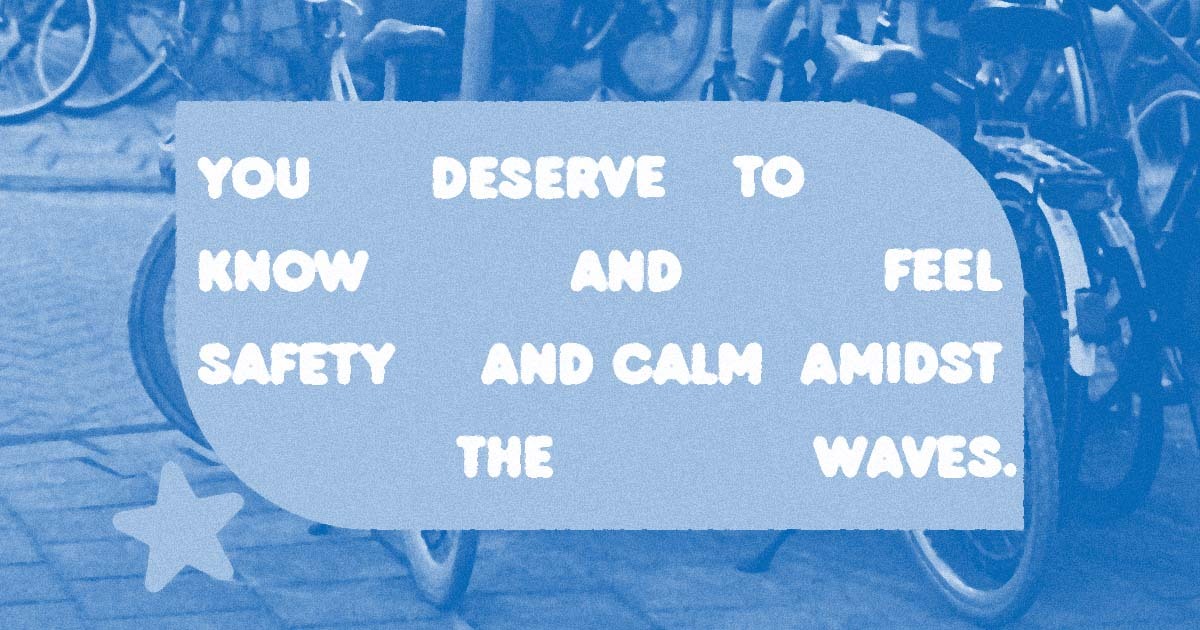Most of us experience it—to varying degrees and in differing ways. It can manifest as racing thoughts, increased heart rate, sweating, tightness and clenched muscles bracing for impact, restlessness, irritability, and so on. It can stem from something like social interactions where we don’t feel safe or accepted, to concern over financial strains, health challenges, or even making it to an appointment on time. Sometimes it lingers in the background, humming quietly but always there, or it takes center stage and makes it nearly impossible to focus on or feel anything else. What are we talking about? The A-word. Anxiety.
You probably already know what anxiety is, or you have your very own definition that’s been formed by a collection of personal experiences. But let’s lay it out just to be clear: “Anxiety is an emotion characterized by an unpleasant state of inner turmoil and includes feelings of dread over anticipated events. Anxiety is different from fear in that fear is defined as the emotional response to a present threat, whereas anxiety is the anticipation of a future one.”
So what stands out? Dread over anticipated events. An emotional response regarding a potential future threat.
The threat, big or small, isn’t here. It hasn’t arrived or come to fruition… yet. But our brains and our bodies don’t always clock the difference between perceived and real.
Our brains are trying to protect us
Maybe it’s a bit of a catch-22. Your brain identifies a possible threat—emotionally or physically—and it fixates on it in hopes of being prepared to fight or avoid it. That can be helpful. It prepares us for challenging or uncomfortable situations. Maybe you’re both excited and nervous to go on a roller coaster, and your body expresses that through jitters. Or perhaps before a performance or a speech, you feel sweaty or clammy. These experiences aren’t inherently negative; they’re new and even exciting, and our bodies sense that energy and try to transmute it. But there’s a certain point where that preparation becomes the prime and overwhelming focus. A threshold where we add to the perceived problem rather than lessen the worry. Drowning out rationality in favor of the opposite.
Our bodies respond to the threat
When anxiety arises, our bodies respond as if the threat is already here or is on the cusp of transpiring. You might have trouble sleeping before a flight or a big presentation, as your body wants to keep you alert. You may start to sweat in a crowded space if you’re concerned about being noticed or being in danger, as your body prepares to flee. You may lash out when every news cycle has the potential to derail your healthcare, as your body is readying for a fight.
We experience a distress loop
Stress and fear are universal emotions, but what happens when the threat hasn’t or never does come to fruition, and we find ourselves stuck in a loop that struggles to resolve? What if one perceived threat is replaced by another and then another and then another? What if our physical or emotional safety is genuinely in a near-constant state of question due to our environment or the political landscape? Neither our bodies nor our minds are built to withstand an endless barrage of anxiety-inducing stressors. Anxiety that persists can lead to truly damaging physical ailments within the body, or it can make our brains feel like a boxing match of hypervigilance.

So what can we do about anxiety?
First, what can’t we do—or what shouldn’t we do? Belittle ourselves. Tell ourselves to “get over it” or to “stop being so sensitive.” You don’t have to be harsh with yourself. You don’t have to label yourself as weak or crazy. You also don’t have to endure or adapt to the anxiety.
So, what can you do?
Reparenting. Talk and tend to yourself like you would a child. Gentle. Reassuring. Certain and safe. Is the threat here? If it does arrive, what might we do? Can we handle it or ask for help if need be? What might bring us a sense of safety and comfort right now?
Nervous system repair. Anxiety activates the sympathetic nervous system—that’s where fight, flight, fawn, and freeze come into play. We’re not trying to avoid those states indefinitely, but we do want to recalibrate our bodies when moments that don’t necessarily need to be stressful consume our attention and energy. So, how do we activate the parasympathetic nervous system? The one that cues up feelings of safety, that sweet spot of “rest and digest.” There are so many avenues to take, it’s a choose-your-own-adventure situation in discovering what works best for you, but to start, there’s: breathwork, humming and singing (to activate the vagal nerve), cold water on your face or wrists, and gentle movement.
Halve the pain by sharing. Maybe with a counselor, an understanding friend, or a pet (bonus points because they’re automatically great listeners). Mental health challenges often thrive in isolation—anxiety is no different. It can build and build endlessly if we let it play on a loop in our heads. Or maybe you’ve tried the “out of sight, out of mind” method, where you pretend it doesn’t even exist. Expressing it, sharing it, or talking about it, can lighten the load—or, at the very least, remind us that we don’t have to carry or navigate it alone.
Anxiety is one of the most common mental health challenges, so you’re not weird or alone in experiencing it. But that doesn’t mean it has to become a part of your daily existence. You, your mind, and your body deserve to know and feel safety and calm amidst the waves.
Craqdi Mazedona Craquis ♀️ ✅️ ✔️
I have high intellectual abilities in Spanish (altas capacidades intelectuales ACI) and sometimes I think that the best way to avoid being influenced by negative thoughts is to be relaxed and alone with yourself.